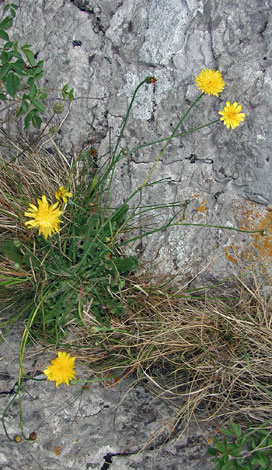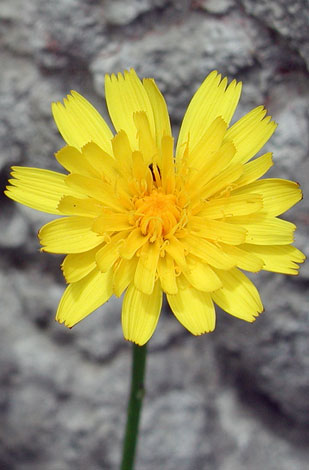Hypochaeris radicata Common Cat's-ear CCC D N



This is one of the common weeds of grasslands, lawns, flowerbeds. It will grow in good soil, bad soil, acid soil, neutral soil, basic soil - it really doesn't care. It starts flowering in June after the main crop of Dandelions has finished and understandably non botanical persons too often refer to it as a "Dandelion".
This is also a species which has suffered from the most annoying kind of taxonomic meddling: the minor spelling correction. It was for many years Hypochoeris radicata but was changed to Hypochaeris radicata However many floras which people still use have the old spelling so this subtle change escapes everyone's notice and both spellings end up being used.
It has been reported in Australia that this plant, which can be very common in fields where horses and cattle are kept, can be the cause of the disease Stringhalt. Stringhalt in horses causes them to lose control of their hind legs resulting in an exaggerated action. This may not cause too much worry in the British Isles where most horses can feed off our grassy paddocks without touching either H. radicata or the even more feared liver poison Senecio jacobaea (Ragwort) but where grass is scarce it could be a problem. The difficulty for horse lovers is that this plant is found all over the British Isles and is one of our commonest plants. The chances of eradication to protect horses from this plant are just about the same as for Ragwort: nil. You can root it our of your field one year but it will be back.
Great Orme, North Wales, 10th June 2004
Added on January 27th 2005, updated 17th December 2009, updated 7th April 2010




